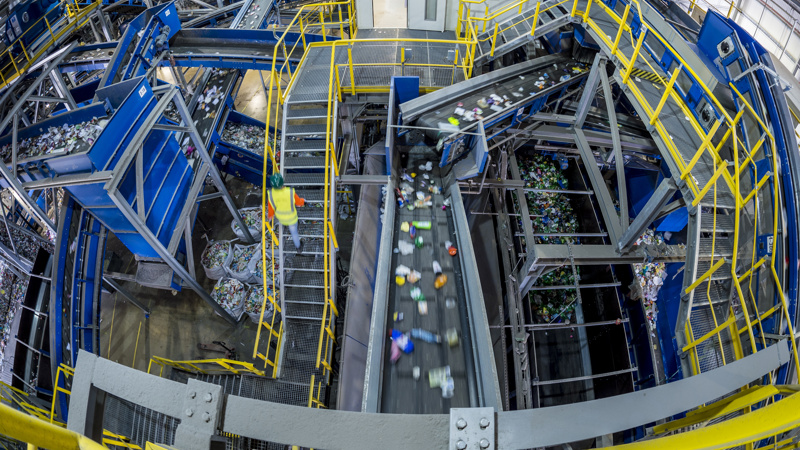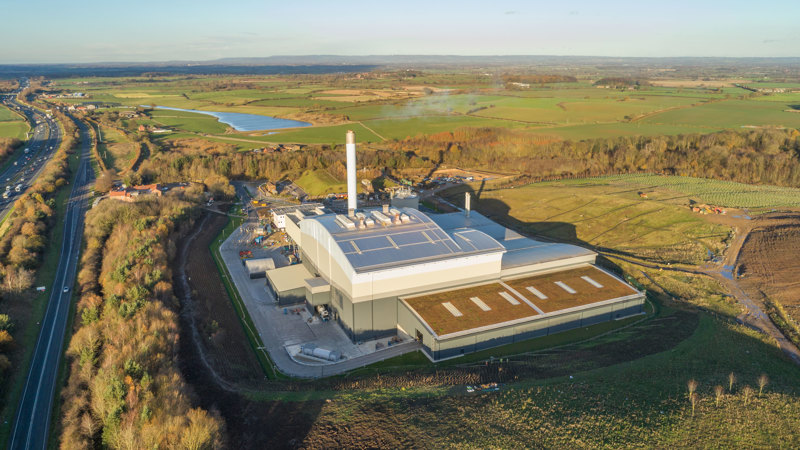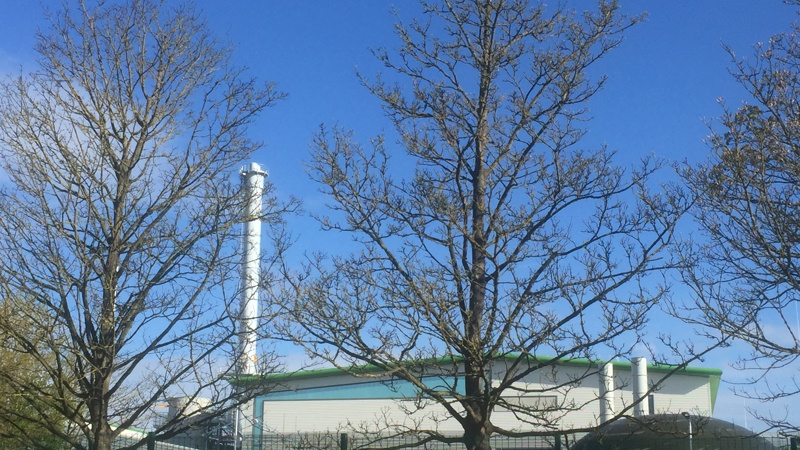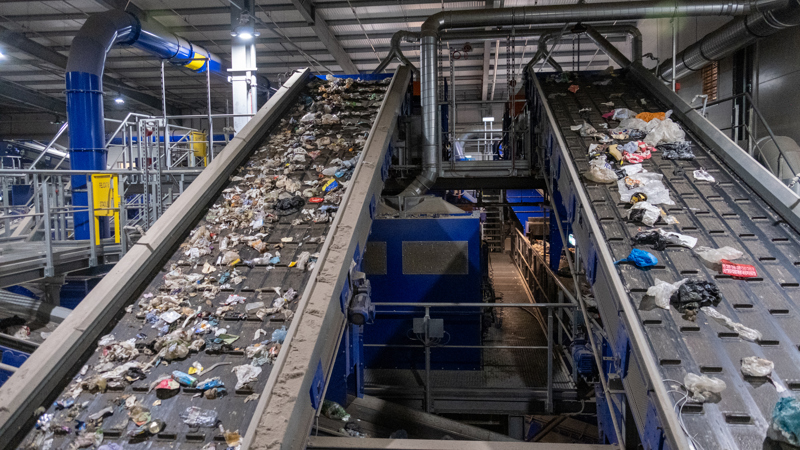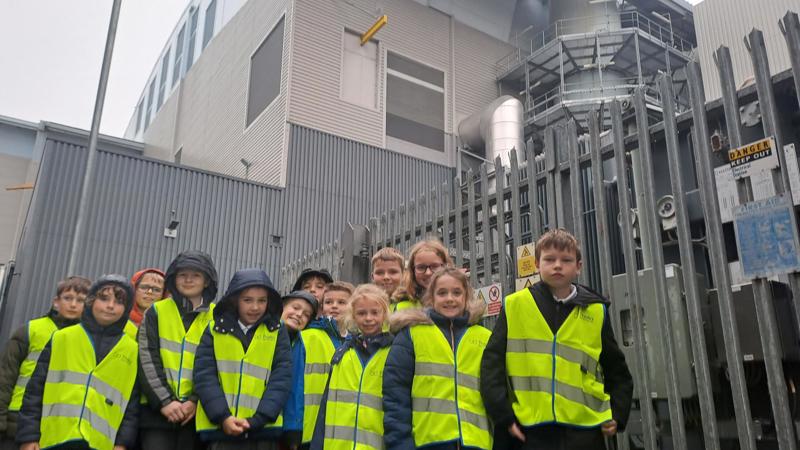Emissions Monitoring
Energy from Waste (EfW) facilities are strictly regulated.
Like all EfW plants, we have to comply with the EU Industrial Emissions Directive (IED) that imposes strict emission limits for all industrial processes.
The Environment Agency conducts continuous emissions monitoring and regular independent checks.
We use a variety of control and treatment processes to ensure gases created during the burning process are cleaned and filtered.
Preventing pollution
The Mechanical Treatment plant extracts recyclable materials such as plastics, metals and organic matter. As well as enabling us to send these items on for recycling, it also ensures that waste is mixed. This is helpful in providing a consistent fuel for the EfW process and maximising efficiency.
Controlled burning
Keeping temperatures above 850°C for at least two seconds during the combustion process ensures that dioxins and furans are destroyed in the EfW boiler and not released into the atmosphere.
We also keep the temperature below 1300°C and control oxygen levels to reduce the levels of nitrogen oxide.
Neutralising gases
As well as controlling the combustion process, urea, hydrated lime and activated carbon are injected into the flue gas to neutralise various components.
- Urea is injected to break down the nitrogen oxides produced during good combustion and convert them to nitrogen and water
- Hydrated lime is injected to neutralise oxides of sulphur and hydrogen chloride and to reduce acidity
- Activated carbon is injected to trap heavy metals and any remaining dioxins
Particulate Matter
What is it?
Particulate Matter is the term used to describe tiny particles in the air which are made up of a mixture of soot, organic and inorganic materials. These are smaller than or equal to 10 microns or 100th of a millimetre in diameter.
How is this released?
There are many man-made and natural sources of particulate matter including road transport, industry, volcanoes and dust storms.
How does AWRP control this?
Gases created during the combustion process are filtered through a bag filter system consisting of 350 ‘bags’ which trap the fine dust.
Total Organic Carbon (TOC)
What is it?
TOC is part of a large group of liquids and gases known as Volatile Organic Compounds (VOC). These are gaseous and can vaporise at room temperature. They can also react with other gases such as Nitric Oxide to form ozone at low atmospheric levels - high concentrations of this can be harmful to humans.
How is it released?
Paints, natural gas, petrol, road transport and industrial processes are the major sources of these compounds. However, some are also produced by natural biological processes.
Organic chemicals are widely used as ingredients in household products. Paint, varnish and wax all contain organic solvents, as do many cleaning, disinfecting, cosmetic, degreasing and hobby products. Fuels are made up of organic chemicals. All of these products can release organic compounds while you are using them and, to some degree, when they are stored.
How does AWRP control this?
By ensuring that waste is burned for two seconds at 850°C.
Carbon Monoxide (CO)
What is it?
CO occurs naturally and is also manufactured during industrial processes. It is a colourless, odourless, poisonous gas.
How is it released?
CO is released by vehicle exhausts and small amounts are released through the burning of fossil fuels in power stations and EfW facilities.
How does AWRP control this?
Our combustion controls ensure that waste is burned at 850°C for two seconds. Getting the right combination of heat and oxygen reduces CO concentrations.
Hydrogen Chloride (HCl)
What is it?
HCl occurs naturally and can be manufactured. It is an acidic, corrosive, colourless gas with a pungent smell.
How is it released?
The main sources of HCl are coal-fired power stations; small amounts are released from EfW facilities.
How does AWRP control this?
Our flue gas cleaning system injects hydrated lime and activated carbon to eliminate HCl.
Sulphur Dioxide (SO2)
What is it?
SO2 is a colourless gas with a strong smell; it can occur naturally or be created.
How is it released?
SO2 is produced by burning coal and oil, typically by power stations and oil refineries. It is also created by any open fire and can also be released naturally from forest fires and volcanoes.
How does AWRP control it?
Hydrated lime and activated carbon are injected into the flue gas network to neutralise it.
Dioxins and Furans
What are they?
Dioxins and furans are related types of complex chemicals containing chlorine. There are several hundred dioxin substances. They are crystalline when solid and dissolve in solvents, fats and oils but not in water.
How are they released?
They can be released as by-products from the burning of fuels, including waste. Some industrial processes including metal processing and paper manufacturing also create them. They are found in cigarette smoke and are released naturally from volcanoes and forest fires.
How does AWRP control them?
We minimise the formation of dioxins and furans by burning waste for at least two seconds at 850°C. Any remaining small amounts are absorbed into the activated carbon that is injected into the flue gas network of pipes.
The reaction product is a dry solid material known as Air Pollution Control Residue (APCR). This is separated by means of the fabric filter from the gas stream and disposed of off-site at a suitable treatment facility.
Current Data
Please click on this link here to see the current emissions data (will open a new window): AWRP Emissions


